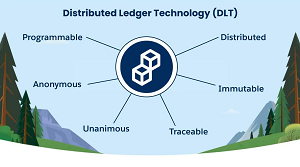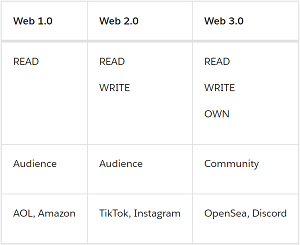Salesforce Leans In to Web3 with New NFT Cloud

Salesforce, known for its cloud-based software for business functionality like customer relationship management (CRM), has furthered its embrace of cutting-edge Web3 technology with the closed pilot of an upcoming NFT Cloud.
Web3 and NFTs (standing for non-fungible token) are tied together as both are based on blockchain technology and the concepts of distribution and decentralization. Blockchain is a fairly new, complicated and multiuse technology that leverages cryptography for its most well-known use case: digital currency such as bitcoins. However, in the enterprise world, it has many more uses, providing a decentralized, distributed ledger created to record the provenance of a digital asset. That’s where the new NFT Cloud comes in.
Salesforce says, “An NFT (nonfungible token) is a digital asset that represents either digital or physical objects like art, music, event tickets, videos, and more. They’re backed by smart contracts, which allows them to have distinctive properties such as secondary sales and transferable value.”
Last week, the company introduced the NFT Cloud as a closed pilot product and featured it in an announcement about customer innovations across its commerce and marketing cloud.
“Salesforce NFT Cloud has been made official, starting its pilot phase in June 2022,” the company said. “The aim is for customers to drive an entirely new breed of communities — a shift from being a customer to an audience, and now to a true community due to the element of ownership. Salesforce have thought this through carefully. NFT Cloud will go to market with trust and sustainability, two of Salesforce’s core values, by design.”
The company related the new cloud to Web3, which Wikipedia describes as the “concept of a World Wide Web based on public blockchains.”
“Salesforce’s NFT Cloud pilot lets brands expand customer experiences to Web3 environments in a sustainable and trusted way,” the company said in the June 8 news release. “They can mint, manage, and sell non-fungible tokens (NFTs) directly on the Salesforce Customer 360 Platform and securely connect customer data to gain a 360-degree view across a customer’s physical and digital worlds.”
Specifically, the NFT Cloud site says the new offering — Salesforce just said it will debut at a later date — will wow customers in these ways:
- Bridge physical and digital experiences: Engage new communities in unique ways with integrated data.
- Deepen loyalty with virtual collections: Mint NFTs using your CRM and sell on your existing commerce site.
- Build trust and mint sustainably: Deploy audited smart contracts, backed by a trusted platform
The NFT Cloud is the latest Web3 initiative from Salesforce, which has hopped on the Web3 bandwagon in a big way, as evidenced by last month’s article titled “Kara Swisher Says You Need a Web3 Strategy — Here’s Why.”
The article states: “With Web3, everyone from artists and gamers to big-name brands are getting involved through crypto, non-fungible tokens (NFTs), virtual reality (VR), augmented reality (AR), the blockchain, and other virtual-based interactivity as part of the metaverse. Just as businesses before built websites, a mobile strategy, and a social media presence, companies now need to get on board with Web3.”
Salesforce even published a “Web3: The Future of the Internet” module on its Trailhead learning site with four segments ranging from getting started to understanding the foundational technologies to learning about trust and safety.
In explaining why Web3 matters, the company related it to previous incarnations of the web, as depicted in the above graphic.
Web3 is a point of evolution beyond where we have been operating. It’s an extension of Web2, which incorporates the advanced technologies we see coming to fruition today. The idea of Web3 is not only to fuel the formation of the metaverse and expansion of cryptocurrency, but to touch on other major industries in our globally interconnected world. The ultimate goal of Web3 is to create a more connected and open digital world.Web3 does not require “permission,” meaning that central authorities will not decide who uses what services. Nor is there a need for an intermediary to facilitate virtual transactions between parties. Web3 theoretically better protects user privacy in certain ways because it’s these authorities and go-betweens in Web2 doing most of the data collection.
The learning module says there are a number of advantages that Web3 has the potential to offer, including:
- Decentralization: Intermediaries would be removed from the equation, and blockchains would provide a transparent platform where the rules are unbreakable and data is publicly recorded.
- Ownership of data: End users will regain control of data by creating a public record of all their activity on the blockchain. Information could then be shared on a case-by-case and permissioned basis.
- Potential for reduction in hacks and data breaches: As more businesses and enterprises enter the space, there will be a large need for added security. This new technology can provide enhanced security because data will be decentralized and distributed. With further development of the rules and regulations, there is potential for reduction in large-scale hacks and data breaches where hackers would need to turn off the entire network of servers and record every transaction on the blockchain to access information.
- Permissionless blockchains: Anyone could create an address and interact with the network. Users will not be barred on account of geography, income, gender, orientation, or a host of other sociological and demographic factors.
Stay tuned to find out just how well the NFT Cloud and the company’s other Web3-related initiatives fulfill on the promise of delivering those advantages.



